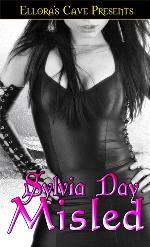Did you ever wonder how a book goes from idea to print? One important part of the process are revisions--after editorial feedback, the author goes back into her story and tweaks or rewrites scenes, chapters, or an entire book.
My first book,
The Prey (Ballantine, January 2006), was pretty tight when my editor bought it. I had minor revisions, mostly layering in some emotion and tweaking a few scenes. I thought I understood the process quite well. I write, I tweak, I publish. I think most first books tend to be well-edited before they are even bought, because as an unpublished author we aren't on deadline. We can play and tweak to our heart's content.
I just turned in the revisions for my third book,
The Kill (Ballantine, March 2006). Suffice it to say, the revised book is wholly different from the original manuscript my editor suffered through (um, I mean read.)
A good editor doesn't tell her authors how to change the story. A good editor shows an author where the problems are, and allows the author's creative instincts to fix the story.
Editing really uses a whole different creative process than writing. Editors need to look at each scene and how it fits into the whole; the story, the characters, the drama, the overall feeling. And they need to ask
Does the story fulfill the promise? Since I write romantic suspense, the two questions are
Does the scene further the suspense? Or the romance?But editors also have to look at the big picture -- will readers of this genre be satisfied at the end. Because as an author, we represent not only ourselves, but our publisher.
It's not that
The Kill was
bad to begin with. It wasn't. The premise was solid, the story intriguing, the heroine strong and determined. The problem? I tried so hard to make the book fit into the proposal I wrote to sell it that every scene fell flat. Anti-climatic. I forced the characters to fit into my pre-conceived plot.
The original
book was unsatisfying. I knew it when I turned it in. It wasn't bad, but I forgot my one "rule" . . .
trust your instincts. I tried to force my characters into roles I'd created, rather than letting them do what came naturally to them. I tried to direct the story because I thought I needed it to end in one specific place, so every scene leading up to that ending fell flat because, ultimately, the story
didn't end there.
When I typed
The End a second time on
The Kill, I knew the story would satisfy. Why? Because I didn't write it so much as I watched it unfold. My characters went off in directions I never imagined. I could hardly type fast enough to keep up with them. They even hopped on an airplane when I thought they should be in bed! LOL.
Next time around, I'm going to trust my instincts more and worry less. I think when I first sold, I became paralyzed. What if I couldn't tell another good story? So I sweated the small stuff and forgot the important stuff--that story is character, and characters drive the story. When I gave my hero, my heroine--and my villain--free will, everything fell into place.
